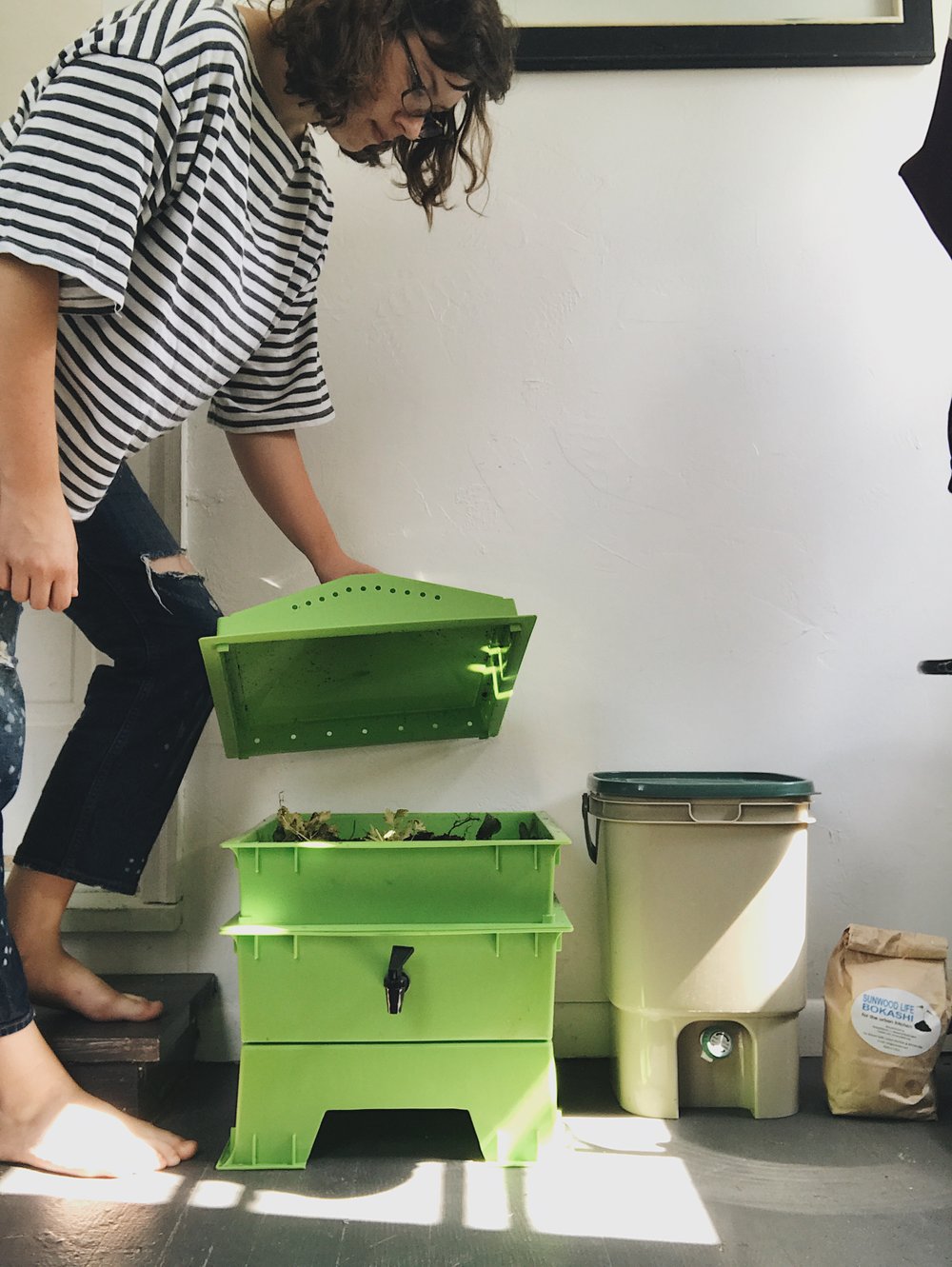Vermicomposting at home
Did you know that
44%
of municipal waste is food waste?
This means that if we eliminate food from our trash bins, our waste
would be reduced almost by half.

You want to reduce your waste but don’t know what to do with food waste
at home? Get some pet worms!
Here's a quick guide to get started:
-
Prepare your future worms' home
You can buy vermicomposting bins online (a couple of reviews here ) but if you're into the DIY movement, you can use two opaque plastic bins. One will have to be slighly smaller than the other in order to fit inside. The inner bin will need some holes drilled at the bottom to let the yummy liquid compost escape into the larger bin.
Finaly, you will need to add a lid with some holes for breathing.
💡🐛Pro tip: to avoid a smelly compost bin, add a thin cotton fabric to the bottom of the lid, you can also buy "worm blankets" online. -
Welcome your worms!
For vermicomposting try finding red wigglers (Eisenia fetida) or redworms (Lumbricus rubellus). You will want to start with about 500 - 1000 which corresponds to about 0,5 - 1 kg.
You can get these worms from a local farm or online (yes, you can get worms shipped to your house!)
💡🐛Pro tip: If you know of anyone with a vermicomposting station, you can get a few worms from them to start your own station. If the conditions are correct, they will quickly reproduce and adapt to the space. -
Feeding your worms: do's and don'ts
Now that your composting station is ready, it's time to feed the worms. What they like : vegetable scrapes from cooking (peels, leaves, seeds, etc.) but also plate scrapes (pasta, rice, beans, etc.). You can also feed them coffee and tea leftovers and egg shells.
What NOT to feed your worms:
Meat/fish, milk-based products, oils, citrus fruit and onions/ garlic are some organic items to avoid. Of course, nothing toxic either.
💡🐛Pro tip: Help your worms out by cutting the food scrapes into little pieces and each time you add food to the bin, add some "dry" waste to keep the humidity levels in order, this can be cut up carboards or paper bags with no chemicals/inks. -
Best conditions for a healthy vermicomposting station
Your worms will be happiest in the dark (keep that lid on) and in temperatures ideally between 15 - 25 °C though they can resist temperatures from 5 - 30°C. Now, your worms will start generating a very powerful fertilizer to use for your gardening.
💡🐛Pro tip: The composting bin can be placed inside but the best would be to place it in a garden or balcony if possible.
This page was built by Victoria Moreno, home-vermicompost enthusiast.